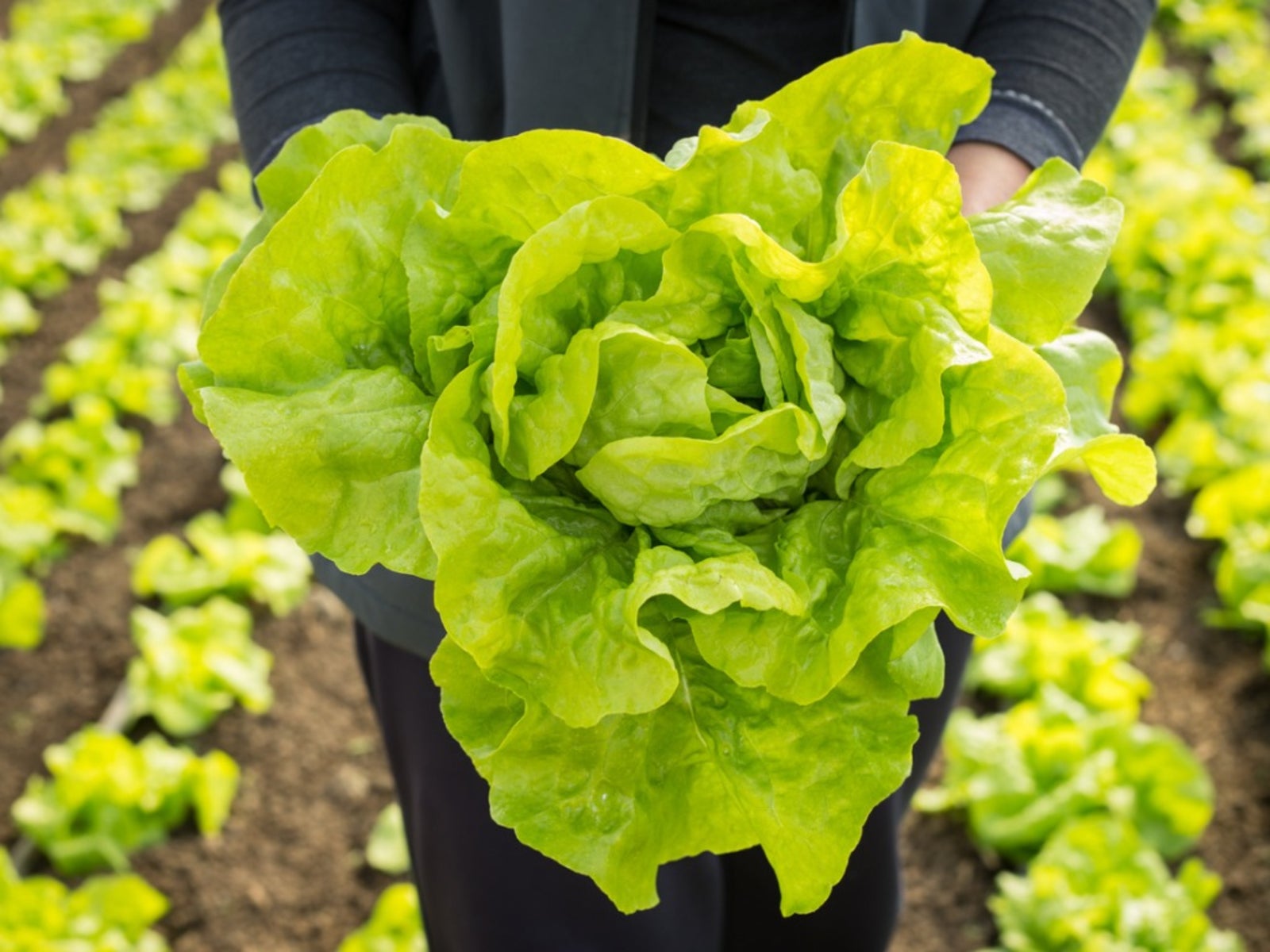Picking Lettuce Heads: How To Harvest Lettuce


Harvesting heads of lettuce is a great way to save money and ensure the main ingredient in your salads is healthy and free of pesticides and diseases. Learning how to harvest lettuce isn't complicated; however, a timetable must be followed to ensure that you know how to pick lettuce correctly.
When to Harvest Lettuce
Harvesting heads of lettuce successfully depends in large part on planting at the proper time for your location. Lettuce is a cool-season crop that cannot handle extreme heat, so picking lettuce heads is the most successful before temperatures skyrocket in summer. The variety planted will somewhat determine when to harvest lettuce, as will the season of planting. Generally, about 65 days after planting is when to harvest lettuce planted in the fall, while harvesting heads of lettuce from a winter-planted crop will take about 100 days. Some varieties are adaptable and when to harvest lettuce varies by as much as seven days before or after the designated time. Temperatures during the growing season determine the right time for harvesting heads of lettuce. Lettuce grows best when soil temperatures are cool. Seeds often sprout in only two to eight days if soil temperatures are between 55 and 75 degrees F. (13-24 C). Seeds can be started indoors and planted in the garden in three weeks. This method can be used three weeks before your average frost date if planting in winter. Fall-planted lettuce should include frost-tolerant varieties which give some leeway in when to harvest lettuce.
How to Harvest Lettuce
Harvesting heads of lettuce is done by cutting them away from the stalk when the head is still firm. Use a sharp knife and simply make a clean cut below the head through the stem. The outer leaves may be removed if needed. Morning is the best time for the harvest as heads will be at their freshest. Learning how to pick lettuce using these guidelines allows the vegetable to be harvested at its peak of freshness. Fresh, homegrown lettuce may be washed with cool water and refrigerated after the excess water is shaken off. A second washing before use may be needed.
Gardening tips, videos, info and more delivered right to your inbox!
Sign up for the Gardening Know How newsletter today and receive a free copy of our e-book "How to Grow Delicious Tomatoes".

Becca Badgett was a regular contributor to Gardening Know How for ten years. Co-author of the book How to Grow an EMERGENCY Garden, Becca specializes in succulent and cactus gardening.
-
 Try The Trend – Turn Any Bed Into A Keyhole Garden With This Clever In-Ground Composter
Try The Trend – Turn Any Bed Into A Keyhole Garden With This Clever In-Ground ComposterKeyhole gardening is an efficient and sustainable practice that saves space. Get started on this DIY project quickly and easily with an in-ground composter.
By Bonnie L. Grant
-
 4 Superfast Composting Methods: Turn Waste Into Garden Gold In 30 Days Or Less
4 Superfast Composting Methods: Turn Waste Into Garden Gold In 30 Days Or LessTry the fastest composting methods to turbocharge your pile and transform kitchen scraps and garden waste into finished compost in just a few weeks.
By Mary Ellen Ellis